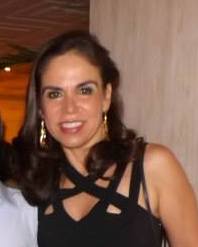Ice-breakers, Warmers and Fillers
Some teachers see warmers, ice-breakers and fillers as basically different ways to say the same thing. In fact, they are quite different. While ice-breakers are usually meant to help students get to know each other better, the objective of warmers is to get them ready for a certain topic or task. Fillers, on the other hand, are activities that don´t require much time or preparation, and are designed to finish a topic or a class on a lighter note, or to review vocabulary before the next part of the lesson. But warmers, ice-breakers and fillers should have at least one ingredient in common: fun. Below, I will list one example of each:
Icebreaker: Eternal mingle
Ask students to write a personal question on a piece of paper, such as “Do you live near here?” or “What´s the first thing you usually do when you get up?” The complexity of the questions, of course, will depend on the proficiency of the group. After everyone has written a question, it´s time to mingle and start talking. Students ask their question to a classmate, listen to the answer, and then switch roles (whoever answered the question should now ask theirs). Before moving on, however, they exchange papers so that students ask a different question every time they change partners.
Warmers: Envelopes with sentences
This suggestion is aimed at introducing the topic of the upcoming unit. In preparation for this activity, write several sentences related to the content of the lesson on separate slips of paper. Supposing the next lesson will be about dinosaurs, you could write sentences saying, for example, “Nobody really knows why the dinosaurs disappeared from the Earth”. After the sentences have been written, cut up the slips of paper so as to separate the words. Put each cut-up sentence in a separate envelope. Hide the envelopes in the classroom before the class starts. When it´s time to start the activity, tell the students that they will have to find an envelope, open it, unscramble the sentences, write the sentence on the board and sit down. If possible, give different color markers /chalk to each group so that everyone knows which group wrote what. The group to have written the most correct sentences wins.
Fillers: Change places if…
This is a great kinesthetic activity for revising verb tenses through a listening task. Have the students form a circle, and then give “orders” such as “change places if you had some cereal for breakfast”. People who did have cereal for breakfast will have to exchange places within the circle. The orders can include almost every verb tense: change places if you live in a house (Simple present); change places if you have been to Buenos Aires (Present Perfect); change places if you are wearing something blue (Pres. Continuous); change places if you were working before class (Past continuous), and so on. Later, each student in turn will have the task of giving the order.
Adapted from Teacher Tools, by Vivian Magalhães, Chapter 1.






